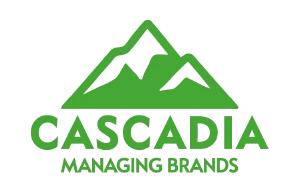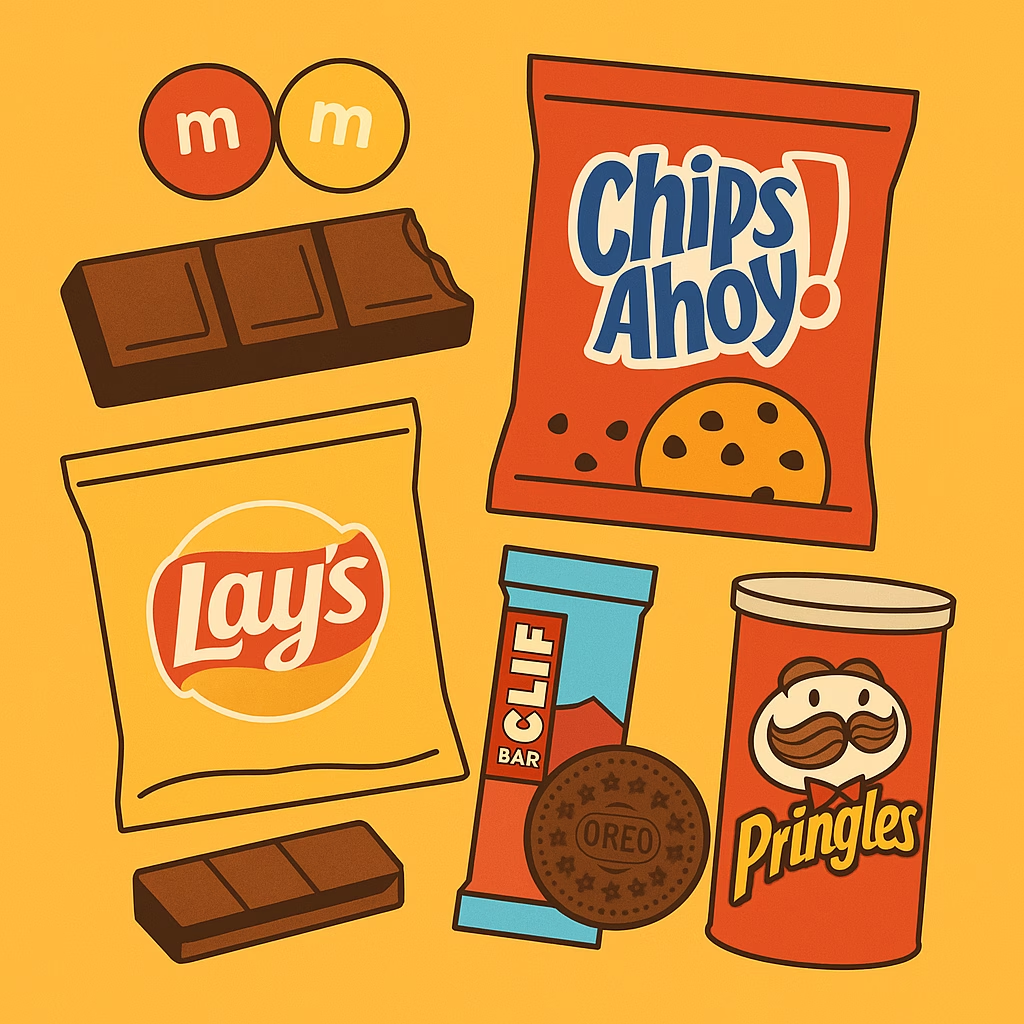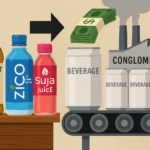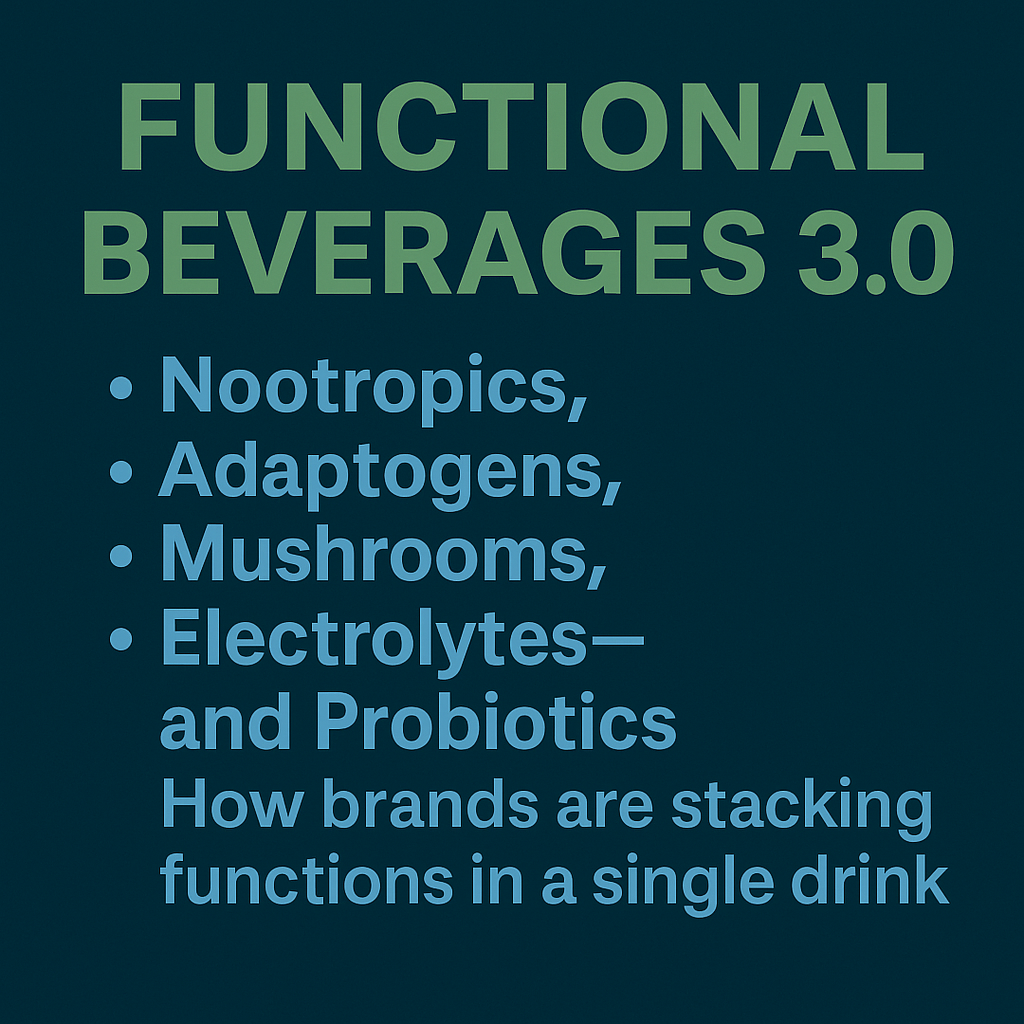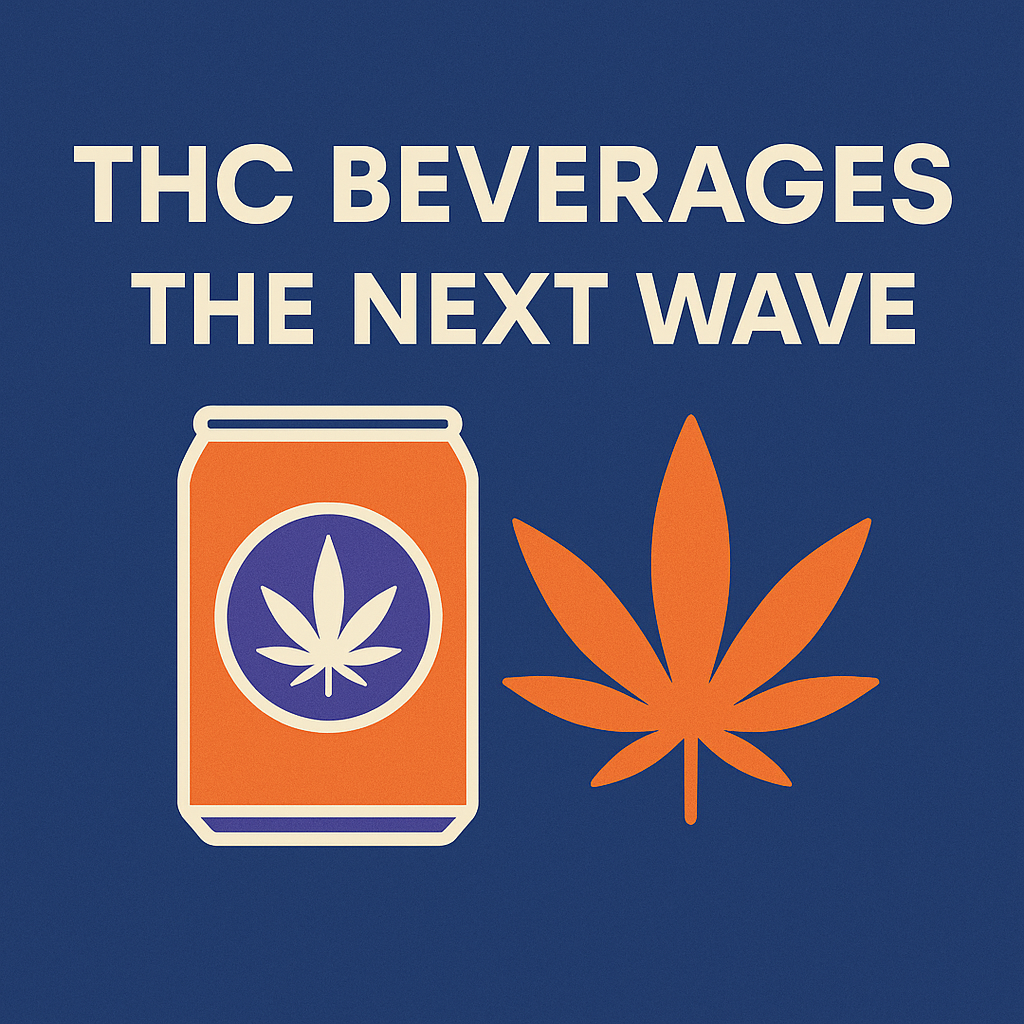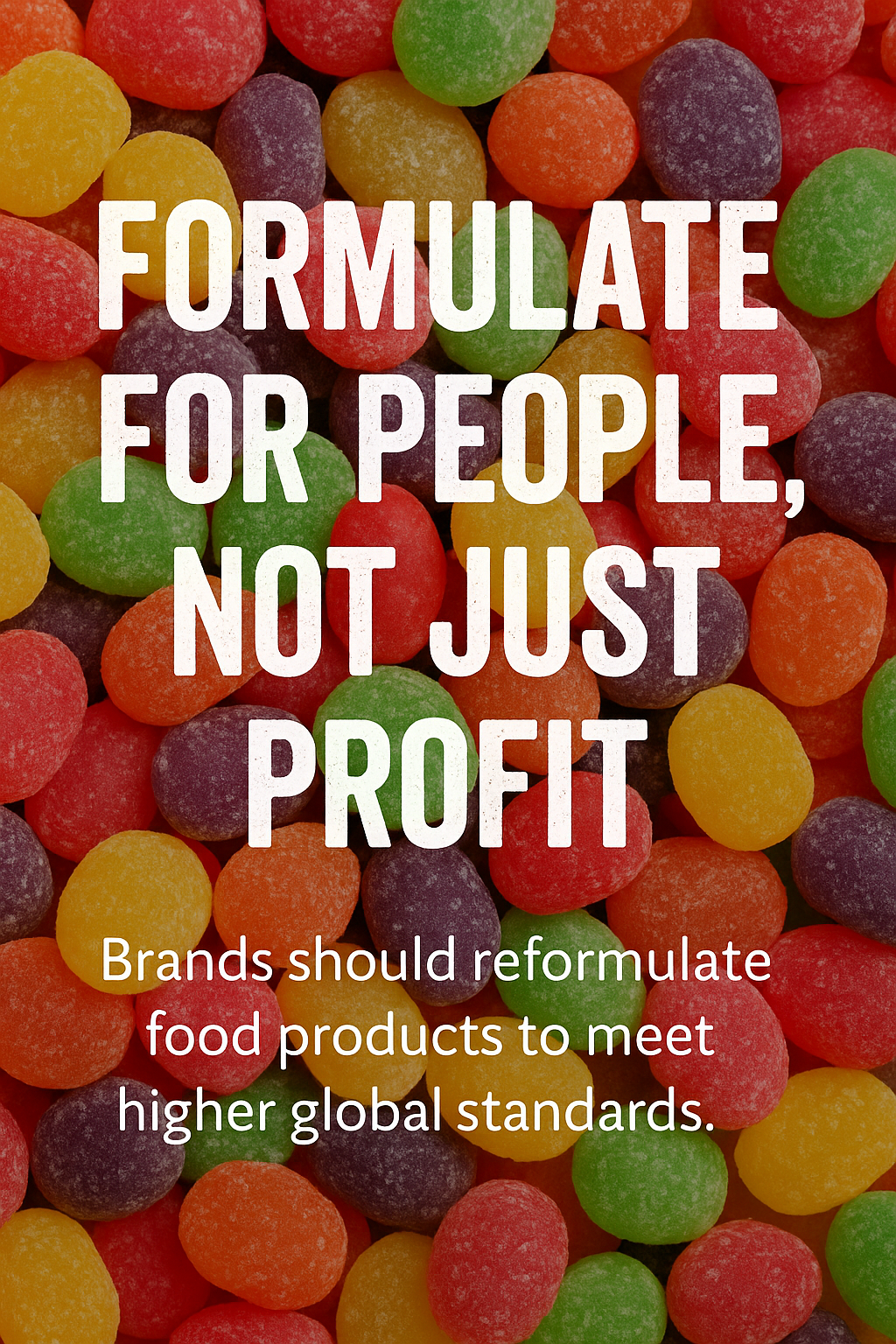The functional beverage space is evolving—fast. What started with protein shakes and vitamin waters has transformed into a sophisticated market…
How Big Companies Are Controlling Your Favorite Snacks, Candy, and Cookies
Big Conglomerates Dominate U.S. Candy, Snacks, Bars & Cookies — and What That Means for Innovation
Walk into any supermarket in America and browse the candy, snacks, bars, and cookie aisles. You’ll see hundreds of options: chocolate bars, salty snacks, protein bars, crispy cookies, chewy cookies, and “healthy” snacks that somehow taste like candy. It feels like a golden age of variety. But scratch the surface and you’ll find that most of these items trace back to just a handful of conglomerates.
In this blog, we break down the major players behind:
- Chocolate 🍫
- Salty Snacks 🧂
- Cookies 🍪
- Snack Bars 🥣
We also explore a critical issue: Have these companies become too good at innovating from within — and are they quietly shutting out the next generation of food brands?
🍫 The Chocolate Kings: Innovation by Iteration
Before we dive into which companies dominate the U.S. chocolate market, here’s what you need to know: Just a few multinational players own nearly every chocolate brand you know and love. And while they rarely launch new brands, they’ve become experts at evolving their existing ones through new flavors, formats, and seasonal drops.
1. The Hershey Company – ~36% Market Share
- Brands: Hershey’s, Reese’s, Kit Kat (U.S.), Almond Joy, York, Whoppers, Brookside.
- Innovation Wins:
- Reese’s: Big Cup, Thins, Potato Chip-stuffed, Dipped Pretzels, Puffs cereal collab.
- Kit Kat: Mint + Dark, Churro, Apple Pie, Blueberry Muffin, Strawberry Crème.
2. Mars, Inc. – ~30% Market Share
- Brands: M&M’s, Snickers, Twix, Dove, Milky Way.
- Innovation Wins:
- M&M’s: Brownie, Pretzel, Caramel Cold Brew, White Chocolate Key Lime Pie.
- Twix: Cookies & Crème, Salted Caramel, Ice Cream bars.
3. Ferrero Group
- Brands: Ferrero Rocher, Nutella, Kinder, Butterfinger, Crunch.
- Innovation Wins:
- Nutella: B-ready bars, Nutella & Go! snack packs.
- Kinder: Surprise eggs, Joy packs, seasonal tie-ins.
4. Mondelez International
- Brands: Cadbury, Toblerone, Milka, Green & Black’s.
- Innovation Wins:
- Cadbury: Oreo-stuffed bars, Marvelous Creations, fruit & nut fusions.
🧂 The Salty Snack Giants: The Flavor Labs
Let’s talk chips, pretzels, and everything crunchy. In this section, we’ll reveal who’s behind your favorite salty snacks—and how one company in particular has a virtual monopoly. These players have turned snack innovation into science, releasing dozens of wild new flavors and formats each year.
1. PepsiCo / Frito-Lay – ~60% Market Share
- Brands: Doritos, Lay’s, Cheetos, Ruffles, Fritos, Sun Chips.
- Innovation Wins:
- Cheetos: Flamin’ Hot, Mac & Cheese, Crunch Pop Mix.
- Lay’s: Fried Pickles, BLT, Street Taco, Southern Biscuits & Gravy.
2. Snyder’s-Lance (Campbell Soup Co.)
- Brands: Kettle, Cape Cod, Snyder’s Pretzels, Snack Factory, Pop Secret.
3. Kellanova (formerly Kellogg)
- Brands: Pringles, Cheez-It.
- Innovation Wins:
- Pringles: Pizza, Dill Pickle, Chicken Sandwich, Thanksgiving Dinner pack.
- Cheez-It: Puff’d, Grooves, Snap’d, Loaded Popcorn.
🍪 Cookie Crumble: Big Brands Own the Jar
Who dominates the U.S. cookie market? The same conglomerates that run chocolate and salty snacks. This section reveals how they hold a tight grip on your cookie cravings, offering classic names and constantly tweaking them with new flavors and seasonal specials.
The U.S. cookie market reached $15.5 billion in 2024, and a few giants control the bulk of it.
1. Mondelez International
- Brands: Oreo, Chips Ahoy!, BelVita, Nilla Wafers.
- Market Share: Oreo (19%), Chips Ahoy! (11%)
- Innovation Wins:
- Oreo: Red Velvet, Tiramisu, Firework, Peanut Butter Pie, Lady Gaga & Pokémon collabs.
- BelVita: Focused on breakfast biscuits and health-conscious consumers.
2. Ferrero Group
- Brands: Keebler, Famous Amos, Mother’s Cookies.
- Market Share: Part of top five firms dominating the category.
- Innovation Wins:
- Keebler: Fudge Stripes Minis, Elfwich, seasonal specials.
- Famous Amos: Premium rebrand with global ingredients.
3. Campbell Soup Company
- Brands: Pepperidge Farm (Milano, Farmhouse, Chessmen).
- Market Share: Top five position.
- Innovation Wins:
- Premium cookies with seasonal and holiday packs.
🥣 The Bar Wars: Who’s Leading the U.S. Snack Bar Market?
Bars are big business—and not just the kind you drink in. From protein bars to granola and fruit bars, this space has seen rapid growth. But just like in other snack categories, the same old names dominate. Here’s who’s winning the battle of the bars.
The U.S. snack bar market is competitive and growing, with top five players owning ~39% of the market.
1. General Mills Inc.
- Brands: Nature Valley, Larabar, Cascadian Farm.
- Market Share: Part of the top five with ~39% market collectively.
- Innovation Wins:
- Nature Valley: Protein bars, granola cups.
- Larabar: Mini formats, high-protein, organic bars.
2. Kellanova
- Brands: Special K Bars, Nutri-Grain, RXBAR.
- Market Share: Top five contributor.
- Innovation Wins:
- Special K: Protein snack bars.
- RXBAR: Clean-label protein bar leader.
3. Clif Bar & Company (Mondelez)
- Brands: Clif Bar, Luna, Clif Kid.
- Market Share: Top five contributor.
- Innovation Wins:
- Clif Bar: Plant-based performance bars.
- Luna: Nutritionally tailored for women.
💡 Innovation or Controlled Creativity?
These conglomerates have mastered “innovation by iteration.” They take existing brands and launch dozens of formats, flavors, and collabs.
This is creative. But it’s also safe. And it often locks out new brands from getting shelf space.
❌ Are New Brands Getting Shut Out?
Yes, often:
- Retail slotting fees block smaller brands.
- Distributor loyalty and incentives go to high-volume players.
- Conglomerates acquire or copy promising brands after they’ve proven themselves.
Notable acquisitions:
- RXBAR → Kellogg
- Clif Bar → Mondelez
- Krave Jerky → Hershey
- BarkThins → Hershey
- Perfect Bar → Mondelez
Startups rarely scale unless they go viral or get big money backing.
📈 Where New Brands Can Win
- Functional nutrition (adaptogens, mood, energy)
- Cultural storytelling and hyper-local roots
- Sustainability and zero-waste innovation
- Ingredient-led disruption (e.g., plant-based, regenerative agriculture)
🎯 Final Thoughts
The American snack and chocolate aisles look like a paradise of options. But most of what you’re seeing is brand theater choreographed by five or six companies.
They do it well. They do it profitably. But they don’t always leave room for new voices.
If you’re a founder, that’s your challenge — and your opportunity.
